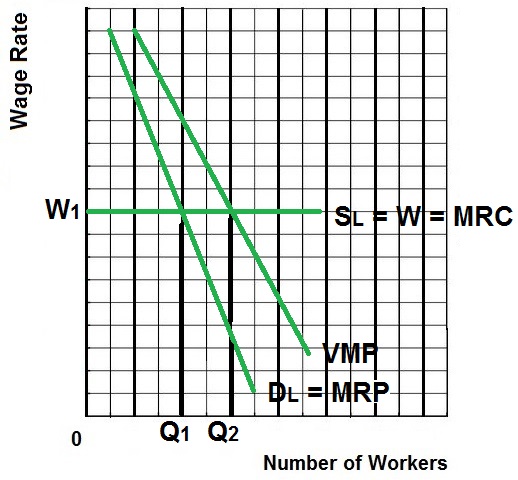|

EXPLANATION/ CHARACTERISTICS /
RESULTS
Imperfect Competition in the Product
Market (Monopoly or Oligopoly)
- One or Few
producers
- Significant barriers to
entry
- A lot of market
power
- The demand curve for the product
is downward sloping - firm must lower its price to sell
more
- Example: Monopolies and
Oligopolies
Competitive Labor Market:
- Very many qualified
workers with identical skills
- Workers are therefore "wage
takers" with no power to get a higher wage
- Therefore the supply of labor
graph (Slabor = W) is horizontal (perfectly elastic) at
the market wage
- Example: The market for
unskilled labor
Example of imperfectly competitive
product market in a competitive labor market:
- Most businesses hiring
unskilled labor
- We know that monopolies and
oligopolies will produce less and sell at a higher price
and are allocatively inefficient in the product market,
therefore they will hire fewer workers and are
allocatively inefficient in the labor market.
Results:
- Profit maximizing
(equilibrium) quantity to hire is Q1 (where MRP =
MRC)
- Allocatively efficient quantity
to hire is Q2 (where VMP = W)
- A monopoly that produces less
output will hire fewer workers. Inefficient!
|